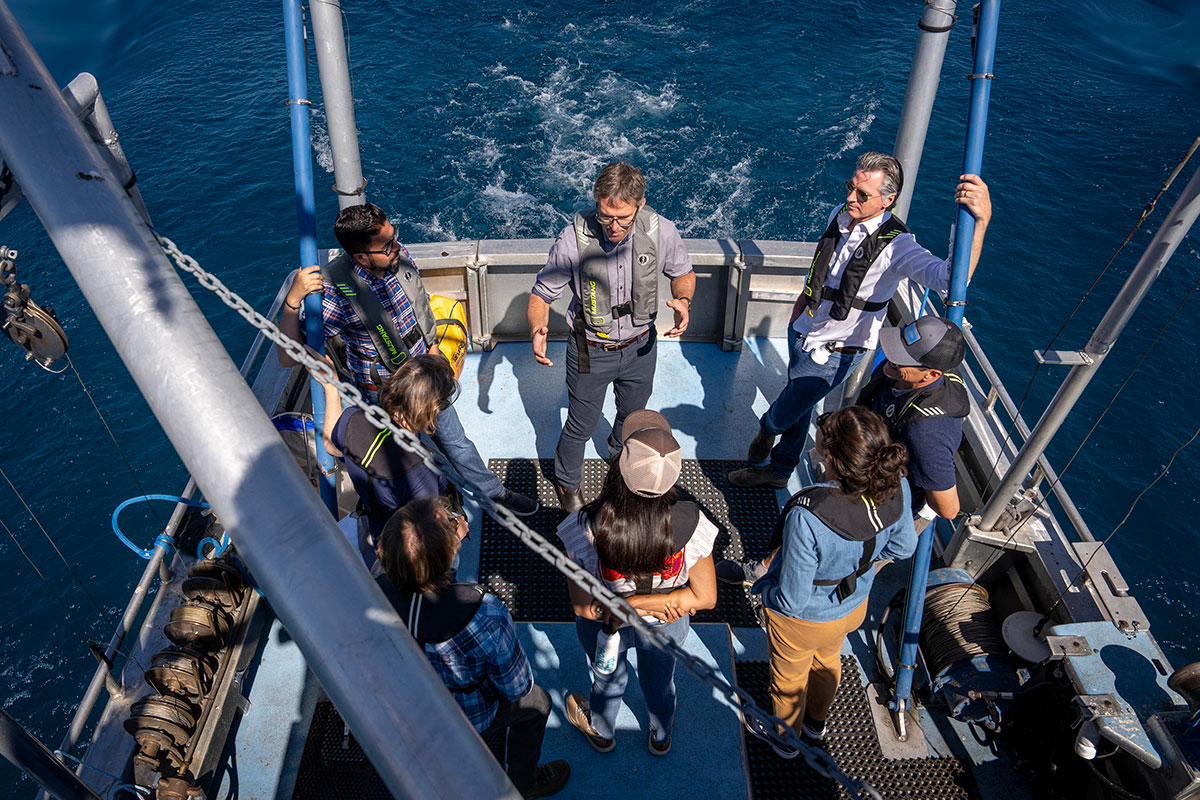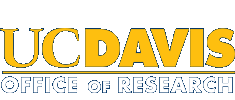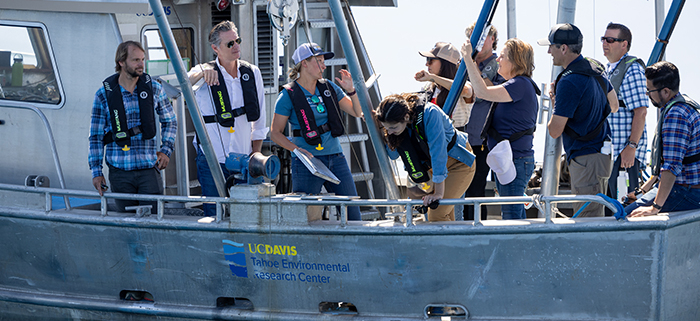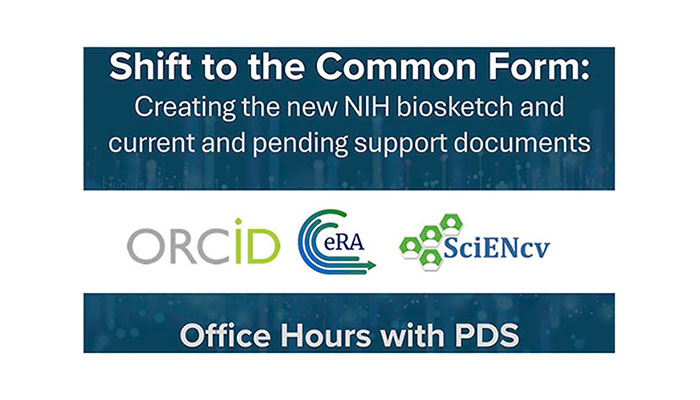Governor Newsom and State Officials Visit Tahoe Environmental Research Center to Discuss Impacts of Climate Change on the Lake
California Governor Gavin Newsom took time during the 2024 Annual Meeting of Western Governors’ Association to meet with researchers at the UC Davis Tahoe Environmental Research Center, or TERC, to discuss the impacts of climate change and approaches to preserve the delicate and ever-changing ecosystem.
The meeting was also attended by several state officials including Senior Advisor on Climate Lauren Sanchez, Secretary for Environmental Protection Yana Garcia, Secretary for Natural Resources Wade Crowfoot, Director of the Department of Water Resources Karla Nemeth and Chair of the State Water Resources Board Joaquin Esquivel.
The group toured Lake Tahoe on one of TERC’s research vessels with a visit to one of several high-tech data collection buoys and autonomous technologies for lake monitoring. They also participated in the process used to measure lake clarity and observed the small aquatic animals named zooplankton in the water.

Photo Credit: The Office of the California Governor
TERC Interim Director Alexander Forrest discussed some of the latest insights to emerge from the center’s research including findings from recent studies examining the impacts of increased smoke from wildfires. The studies reported that as much as 70% of California was covered by wildfire smoke during parts of 2020 and 2021 and touched nearly every lake in North America during a three-year span.
“The growing frequency of large-scale wildfires across the state have extensive implications for freshwater ecosystems through the deposition of particles changing both light and nutrient conditions,” said Forrest.
TERC researchers discussed the numerous factors affecting Tahoe’s famed clarity and how their team is focused on understanding the drivers and how they vary through the seasons. These include inorganic particles brought in through run-off to phytoplankton species, algae that live in the lake, as well as zooplankton, which are microscopic aquatic animals that consume the harmful phytoplankton.
The meeting highlighted the continued need for collaborative approaches to protect the lake and to utilize the insight in similar ecosystems across the world. UC Davis began conducting research on Lake Tahoe in 1958 and the ongoing monitoring program is one of the longest in the country, but relies on support from and collaboration with local and state agencies.
Late last year, as part of a historic partnership between the University of California and the state of California, over $80 million in state-funded climate action grants were announced to spur implementation of solutions that directly address state climate priorities.
The California Climate Action Seed Grants and Matching Grants will fund 38 projects that collectively involve more than 130 community, industry, tribal, and public agencies, as well as 12 UC locations, 11 California State University (CSU) campuses and two private universities. Four UC Davis led projects were among the grantees.







